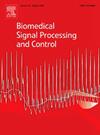Automated diagnosis of plus disease in retinopathy of prematurity based on transformer-based unsupervised curriculum learning
IF 4.9
2区 医学
Q1 ENGINEERING, BIOMEDICAL
引用次数: 0
Abstract
Retinopathy of prematurity (ROP) is a serious ocular condition that predominantly impacts premature infants, with plus disease serving as a significant marker of its severity. Timely and accurate identification of plus disease is essential for effective intervention and the prevention of vision impairment. To overcome this issue, a novel Transformer-based Unsupervised Curriculum Learning model (TUCLM) is introduced for automatic diagnosis of plus disease. The proposed Transformer-based Unsupervised Curriculum Learning Model (TUCLM) is an advanced framework for automating the diagnosis of several diseases without the need for labelled training data. The unsupervised clustering component processes these features to group them into clusters and assigns pseudo-labels, facilitating a pseudo-supervised learning approach. The training method begins with the PRes-SE-att-ViT extracting features from retinopathy images. These features are then examined using an unsupervised clustering method, which categorizes similar features into distinct clusters. To enhance the quality of learning, the nearest neighbour of centroid theory is used to identify reliable samples from each cluster. These selected samples are used to fine-tune the PRes-SE-att-ViT model. After fine-tuning, the model is re-used to extract features from the complete dataset, which includes both reliable samples and additional images. The features are reclustered, pseudo-labels are updated, and reliable samples are reselected using the new clustering results. This iterative cycle of feature extraction, clustering, pseudo-labeling, and fine-tuning is repeated until the PRes-SE-att-ViT model reaches convergence. The experimental results demonstrate good results in detecting plus disease with accuracy of 99.3%, precision of 98.8%, recall of 99.1%, and F1-score of 99%.
求助全文
约1分钟内获得全文
求助全文
来源期刊

Biomedical Signal Processing and Control
工程技术-工程:生物医学
CiteScore
9.80
自引率
13.70%
发文量
822
审稿时长
4 months
期刊介绍:
Biomedical Signal Processing and Control aims to provide a cross-disciplinary international forum for the interchange of information on research in the measurement and analysis of signals and images in clinical medicine and the biological sciences. Emphasis is placed on contributions dealing with the practical, applications-led research on the use of methods and devices in clinical diagnosis, patient monitoring and management.
Biomedical Signal Processing and Control reflects the main areas in which these methods are being used and developed at the interface of both engineering and clinical science. The scope of the journal is defined to include relevant review papers, technical notes, short communications and letters. Tutorial papers and special issues will also be published.
 求助内容:
求助内容: 应助结果提醒方式:
应助结果提醒方式:


